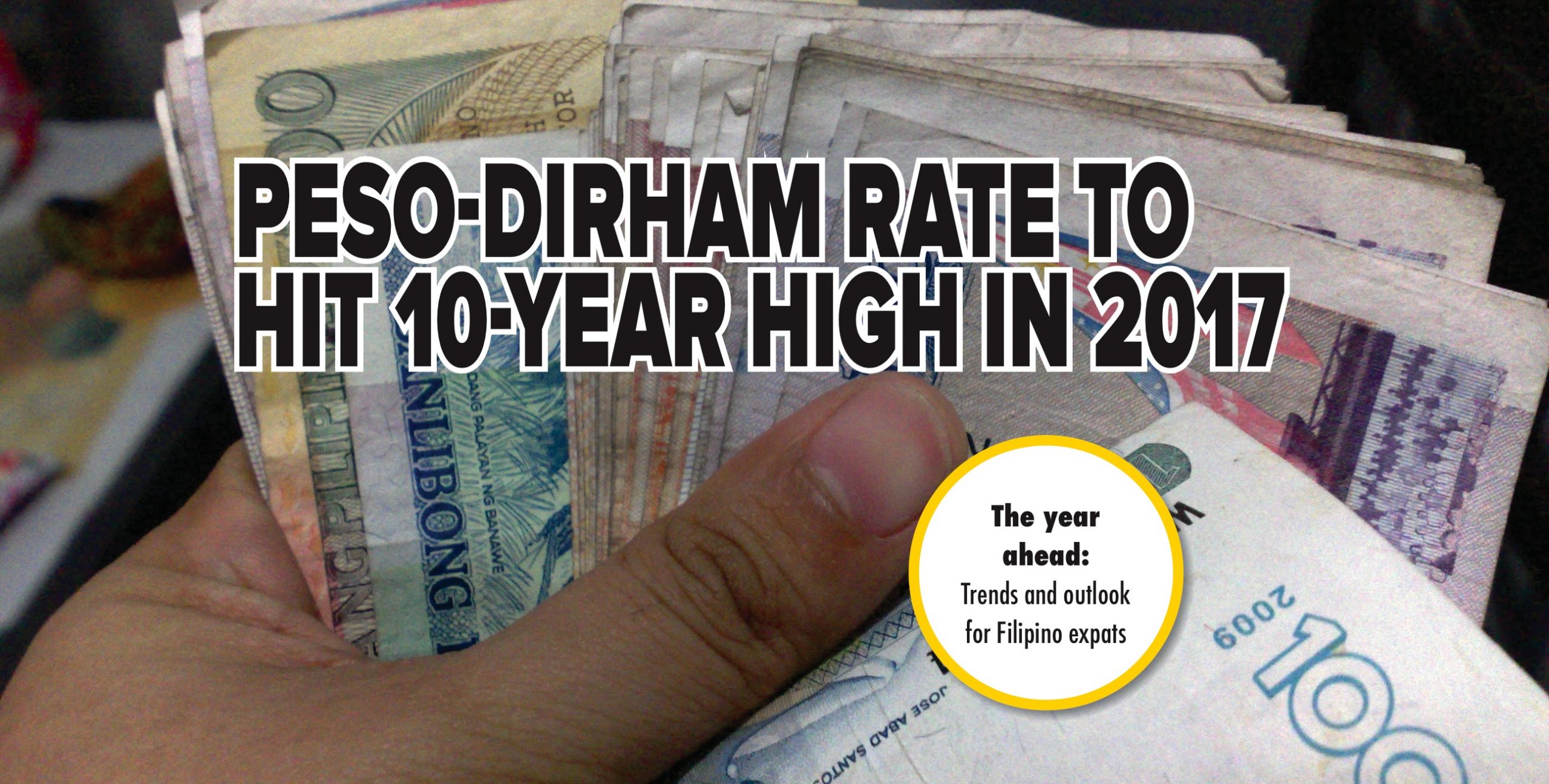The peso is predicted to cross the P14 mark around the fourth quarter of the year following a steady upward trend from the current Ph13.55 exchange rate in the face of a robust dollar, among other factors.
Meantime, more overseas Filipinos in the UAE said they find it “doable” to go home for good and open businesses also this year in light of the Duterte administration’s recent announcements about decreasing crime rates in the Philippines.
These, in a nutshell, are what’s ahead for Pinoys in the UAE this year, predicated by a changing employment arena where it becomes an employer’s market resulting from cost-cutting by some companies to stay lean, and more entries into Filipino-run businesses – mostly SMEs in the restaurant sector – resulting from entrepreneurial skills trainings and support from civic groups.
Exchange rate
Trading Economics, a global portal providing data on indicators and statistics in over 200 countries, said the Philippine peso is forecast to be at Ph50.23 to the dollar in the first quarter of 2017; Ph50.72 in the second; Ph51.22 in the third; and Ph51.72 in the fourth.
With the dirham tied to the dollar, this would mean a peso-dirham exchange rate pegged at the Ph13.69 range in the first quarter; Ph13.82 in the second; Ph13.96 in the third; and Ph14.10 in the fourth.
“The Philippine peso forecasts are projected using an autoregressive integrated moving average (ARIMA) model calibrated using our analysts’ expectations,” Trading Economics explained in its report.
“We model the past behavior of Philippine peso using vast amounts of historical data and we adjust the co-efficients of the econometric model by taking into account our analysts’ assessments and future expectations,” added.
according to data from Wall Street Exchange, a UAE-based remittance company. The exchange rate was highest in Jan. 2004 at Ph15.11, also according to Wall Street Exchange.
Philippine Budget Secretary Benjamin Diokno has said the peso depreciation is a result of the strengthening dollar, itself caused by an increase in the US Federal interest rate, which was announced during a Dec. 14, 2016 where officials said they would nudge the rate up to between .50 percent to .75 percent.
As the Wall Street Journal (WSJ) reported, “the Federal Reserve showed increasing optimism about the U.S. economy and signaled interest rates would rise at a faster pace than previously projected, as it unanimously approved its second rate increase in a decade.”
Filipinos with pending financial obligations back home, including bank loans and condo mortgages, said they’ll take this as an opportunity to fast track payments. Others said they’ll invest more in their dollar accounts.
“It’s really a big ‘wow,’” said Grace Caguete, who runs her own business in Dubai.
Clement Torno, who lives in Satwa, noted that with the Feds increasing rates, he may consider putting in more money in his dollar account back home.
Gemmy Lontoc, who had worked in the UAE’s money transfer industry for years said the data from Trading Economics should be taken with a bit of caution explaining that accurate figures may be difficult to arrive at. “May ibang factors din that may affect not just the dollar trend like political conditions.”
For his part, Sudhesh Giriyan, COO of Xpress Money, a remittance company, said that having noticed the peso depreciating consistently against the dirham more so in the last four months of 2016, “We expect the Peso rate to hold on at the current level for the first few months of 2017.”




